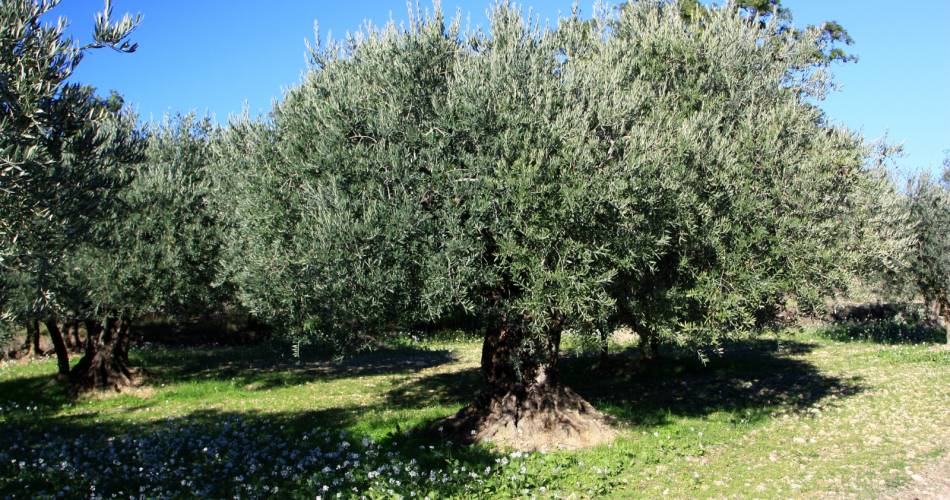Mérindol
Olive Mill Itinerary – The Old Château Mill
Tourist service in Mérindol :
Open for self-guided visits, free of charge, every Thursday and Saturday from 10.30am to 12.30pm, during months of July and August. This building, constructed in the 16th century, located in the heart of the village, has always housed an oil mill. Here, visitors can enjoy a guided tasting session. The extraction process is explained by the Boudoire sons - the family of millers; visitors can also look around the premises. Traditional mill that uses granite stone to pound olives and extract the oil (Allow 30 minutes).
I walk through the old village and stop at the Tourist Office for the map; I then set off from the salle des fêtes (banquet hall) - there's a board with directions in the car park. I walk through the village, as far as the town hall. I turn left into rue du Four and then rue de la Muse. The first olive groves I come across are planted in terraces. I continue along the rue des Cigales, I turn right up chemin du Vallon Bernard. There are orchards on both the right and the left. I take the chemin de l’à-pied which provides a magnificent view of the village. I continue as far as the ruins of the old village and then turn left into Chemin de Bénezet and, after 500 m, turn left again, returning along le chemin de la Muse and continuing beyond the village. At the end of the first path, after going down Chemin de Bénezet, at the “Chemin de la Muse” signpost, I turn right into Chemin du Bon Puit. 500 metres further, I turn left. I then reach the D 973 main road and take a right turn and then, after 100 m, turn right again into the Chemin du Grand Champeau. I walk through a classic multi-trunk olive grove (information board on left). After 300 m, I turn right into Chemin de la Font de l’Orme. I continue for 500 m and then turn right into the Chemin des Grandes Terres. After 100 m, I return via the Chemin du Bon Puit on my right. The olive groves in the village of Mérindol are some of the largest collections in the Luberon. I follow the small village roads and then a forest trail that leads me to the slopes of the Massif du Luberon. During the course of my walk (and particularly between the outskirts of the village and the forest), I see some magnificent olive groves, planted in terraces. From the promontory (orientation board below castle ruins), I can see three distinct types of landscape, at first hand: behind me, the Massif du Luberon, whose rocky outcrops capture the light, further highlighting the forest. At my feet, are the Southern foothills of the Luberon, dotted with olive groves and houses. Further away, towards the horizon, stretches the Durance plain with its vast irrigated fields (cereals, meadows, various orchards, vegetable crops). The silvery reflections of the Durance river are further heightened by the vegetation growing along its banks (known as riverain vegetation. The Durance winds between the rolling hills of the neighbouring Bouches-du-Rhône and the farmlands in the river plain. Opposite the village is the start of the Carpentras Canal, that takes its water from the Durance, and then irrigates the entire Comatdine plain. I then continue into the heart of the southern foothills of the Luberon – a wonderful opportunity to see, close-up multi-trunk olive groves and observe (along the D973) the division between the foothills and the plain.Circuit created by the Vaucluse Group of Olive Growers.Tel: 04 90 78 21 61 - www.civampaca.org - civam84@wanadoo.fr.
Contact
Olive Mill Itinerary – The Old Château Mill8, rue du Moulin à Huile
84360 Mérindol
Tel :
View number
04 90 72 86 76
E-Mail : moulinboudoire@gmail.com
Website : https://www.moulinboudoire.fr
E-Mail : moulinboudoire@gmail.com
Website : https://www.moulinboudoire.fr
Coordinates
